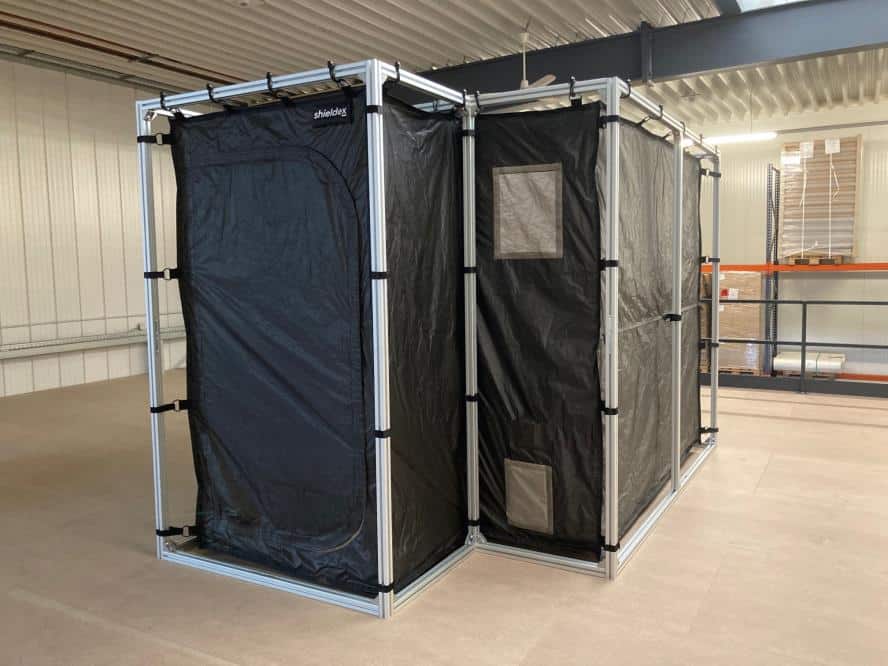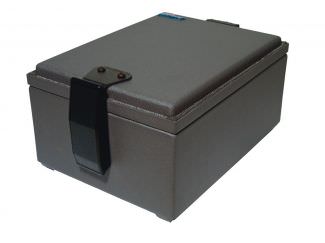Maximizing Examining Precision With Shielded Test Units in Electronic Growth Procedures
Protected test units have arised as a crucial tool in boosting the accuracy of screening procedures for digital components and tools. The utilization of secured test rooms expands past simple insulation, offering a myriad of benefits that contribute to the general quality and effectiveness of screening end results.
Value of Secured Test Units
The application of protected examination units is extremely important in making certain accurate and dependable electronic advancement procedures. Shielded rooms provide a controlled screening setting by avoiding electro-magnetic interference (EMI) from outside resources that can jeopardize the stability of digital screening procedures. This is especially vital in delicate digital dimensions where also the least interference can lead to wrong outcomes. By having the electromagnetic signals within the enclosure, shielded test units help preserve the consistency and repeatability of test end results, ultimately enhancing the overall quality of electronic development processes.
In addition, protected test rooms add to conference regulatory criteria and compliance needs in the electronics market. In significance, the value of secured test rooms exists in their ability to secure the accuracy and integrity of electronic development processes via the creation of an interference-free and regulated testing setting.
Kinds of Shielded Test Units
Various setups of protected examination units satisfy diverse testing requirements and specs in digital growth procedures. One usual type is the benchtop shielded test enclosure, which is portable and perfect for examining small electronic gadgets or parts. These enclosures offer a secured atmosphere that protects against exterior disturbance throughout screening, guaranteeing accurate results. One more kind is the rack-mounted secured examination unit, which is made to suit common devices racks. This sort of room is appropriate for larger testing arrangements where multiple tools require to be checked concurrently. In addition, mobile shielded test enclosures supply adaptability for on-site testing or when wheelchair is needed. These enclosures are light-weight and very easy to carry, making them optimal for area testing or troubleshooting electronic systems (rf shielding boxes rochester). In general, the selection of shielded test unit depends upon the particular testing needs, the dimension of the gadgets being tested, and the degree of flexibility called for in the electronic growth procedure.

Benefits of Making Use Of Shielded Enclosures
Enhancing electromagnetic compatibility and making certain reputable examination outcomes, shielded rooms play a vital role in maintaining the integrity of electronic advancement procedures. Among the crucial benefits of utilizing secured units is their capacity to mitigate electro-magnetic disturbance (EMI) from exterior resources. By offering a regulated setting with marginal exterior disturbance, protected units allow precise testing of electronic devices without the risk of incorrect outcomes created by undesirable electro-magnetic signals.
Additionally, protected rooms provide a high level of safety by avoiding sensitive information from dripping out and unapproved signals from getting in the screening atmosphere. When testing proprietary or private electronic parts that call for a safe screening atmosphere., this attribute is specifically essential.

In addition, protected enclosures assist in adhering to governing requirements and accreditations by giving a controlled screening atmosphere that fulfills the required electro-magnetic compatibility (EMC) standards. This makes certain that the electronic gadgets being tested will certainly meet the essential industry requirements for electromagnetic emissions and immunity, bring about smoother accreditation procedures and quicker time-to-market for products.
Considerations for Protected Unit Selection
In the process of choosing protected rooms for digital advancement, cautious factor to consider of specific requirements and ecological variables is critical. When picking a shielded room is the material used for its construction, the very first consideration. Conductive materials such as steel or aluminum are frequently preferred for their shielding effectiveness. Additionally, the size of the room need to suffice to suit the digital parts being examined while enabling correct air flow and cable television monitoring.
Another vital aspect to consider is the degree of protecting required for the testing environment. High-frequency applications might demand enclosures with premium electro-magnetic interference (EMI) shielding abilities to avoid signal interference and make certain precise test outcomes. Moreover, the access attributes of the unit, such as doors, useful source panels, and ports, ought to line up with the testing demands to assist in convenient accessibility to the equipment under examination.
Lastly, the mobility and scalability of the shielded unit ought to be evaluated to make sure versatility in accommodating future screening requirements and prospective reconfigurations. By thoroughly analyzing these considerations, electronic advancement procedures can maximize testing precision and performance with the suitable secured enclosure choice.

Integration of Shielded Enclosures in Testing
The smooth assimilation of secured units right into screening treatments is essential for guaranteeing precise and trusted digital growth procedures. Shielded rooms play a crucial role in minimizing external disturbance during testing, therefore boosting the precision of outcomes. When incorporating protected rooms right into screening settings, it is necessary to take into consideration variables such as the dimension of the unit, the sort of protecting material used, and the particular testing requirements of the electronic parts being evaluated.
One key element of integrating secured rooms right into testing is ensuring visit their website proper connectivity within the room. This consists of developing protected links for power sources, data transfer, and surveillance tools to effectively perform tests while preserving the securing effectiveness of the room. Additionally, applying correct ventilation and cooling systems within the room is crucial to prevent getting too hot of electronic elements during testing procedures.
Verdict
Finally, using protected test units in electronic development processes is critical for optimizing testing accuracy. Different kinds of protected units offer different advantages, and cautious consideration needs to be provided to picking the most suitable one for particular testing requirements. Incorporating shielded rooms into the testing procedure can considerably boost the integrity and efficiency of digital testing procedures.
Protected rooms give a regulated screening setting by avoiding electromagnetic disturbance (EMI) from external sources that can compromise the stability of digital screening treatments - rf test enclosure rochester. By having the electro-magnetic signals within the enclosure, shielded examination rooms aid keep the uniformity and repeatability of test outcomes, ultimately improving the total high quality of digital growth procedures
When incorporating shielded rooms right into screening settings, it is essential to take into consideration factors such as the size of the enclosure, the kind of shielding material used, and the specific testing requirements of the digital components being evaluated.
One key aspect of integrating protected rooms right into testing is ensuring proper connectivity within the room. Integrating protected enclosures right into the screening procedure can dramatically boost the dependability and efficiency of electronic testing click this link treatments.